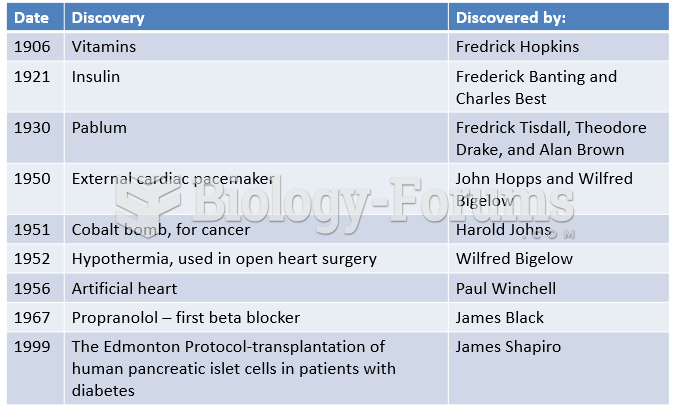This topic contains a solution. Click here to go to the answer
|
|
|
Did you know?
About 3.2 billion people, nearly half the world population, are at risk for malaria. In 2015, there are about 214 million malaria cases and an estimated 438,000 malaria deaths.
Did you know?
Vital signs (blood pressure, temperature, pulse rate, respiration rate) should be taken before any drug administration. Patients should be informed not to use tobacco or caffeine at least 30 minutes before their appointment.
Did you know?
Everyone has one nostril that is larger than the other.
Did you know?
The horizontal fraction bar was introduced by the Arabs.
Did you know?
About 100 new prescription or over-the-counter drugs come into the U.S. market every year.







